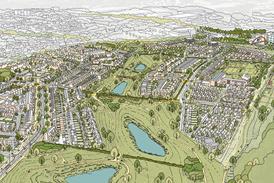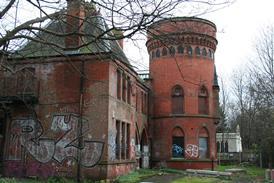- Home
 Crown Estate submits plans for 4,000-home Hertfordshire town masterplanned by Prior + Partners
Crown Estate submits plans for 4,000-home Hertfordshire town masterplanned by Prior + Partners Council looking for new development partner on scrapped transformation of listed Victorian baths
Council looking for new development partner on scrapped transformation of listed Victorian baths Zaha Hadid Architects’ turnover up 8% as Middle East takes over Asia as firm’s biggest market
Zaha Hadid Architects’ turnover up 8% as Middle East takes over Asia as firm’s biggest market What made this project… Elizabeth Mews by Trewhela Williams
What made this project… Elizabeth Mews by Trewhela Williams
- Intelligence for Architects
- Subscribe
- Jobs
- Events

2025 events calendar Explore now 
Keep up to date
Find out more
- Programmes
- CPD
- More from navigation items
Who do we want to immortalise?

The memorials we erect say more about us than they do about the past, writes Duncan Wilson, as Historic England tries to start a national debate
England has an extraordinary legacy of statues and memorials, but they represent ways of commemorating – usually a particular type of person or event – that belong to other ages.
Not that there haven’t been changes in the past. The First World War memorials to ordinary soldiers marked a significant departure from the tradition of memorialising the great and the good. But taking historic memorials and statues as a group, they present us with some challenges to our values and beliefs today. There are many more men than women and few people of colour, yet we are an increasingly diverse society that wants to see diversity celebrated and acknowledged in public places.
…
This is premium content.
Only logged in subscribers have access to it.
Login or SUBSCRIBE to view this story

Existing subscriber? LOGIN
A subscription to Building Design will provide:
- Unlimited architecture news from around the UK
- Reviews of the latest buildings from all corners of the world
- Full access to all our online archives
- PLUS you will receive a digital copy of WA100 worth over £45.
Subscribe now for unlimited access.
Alternatively REGISTER for free access on selected stories and sign up for email alerts


